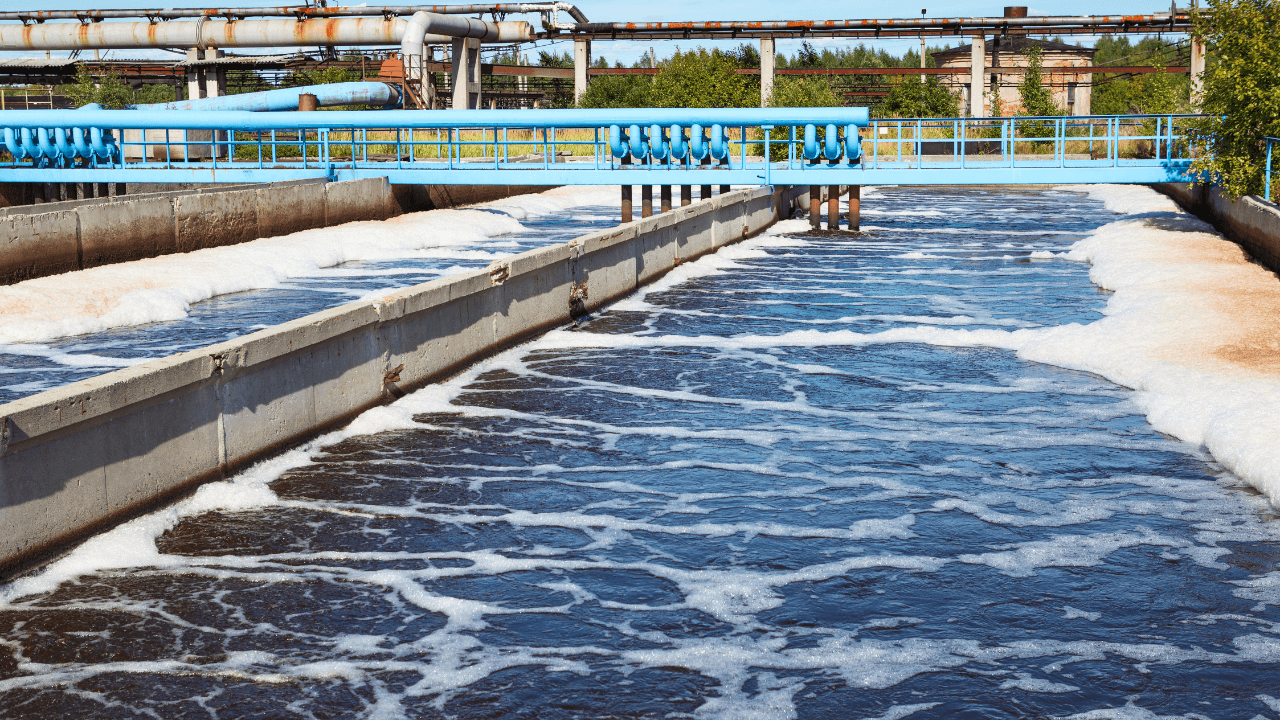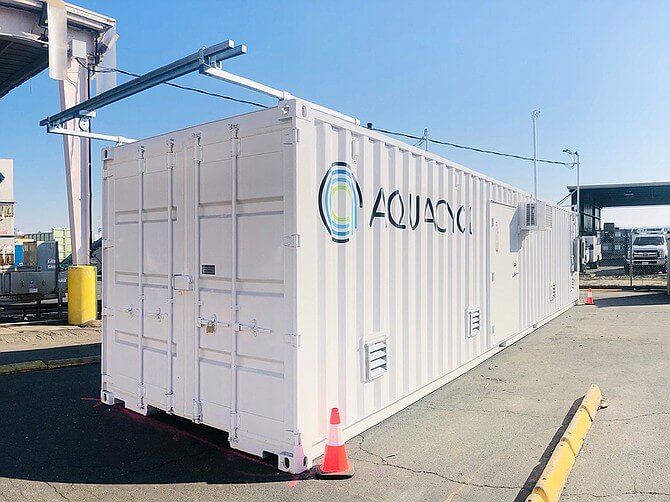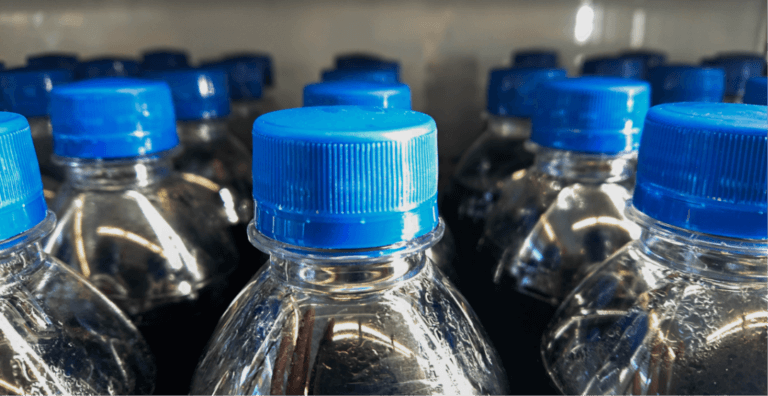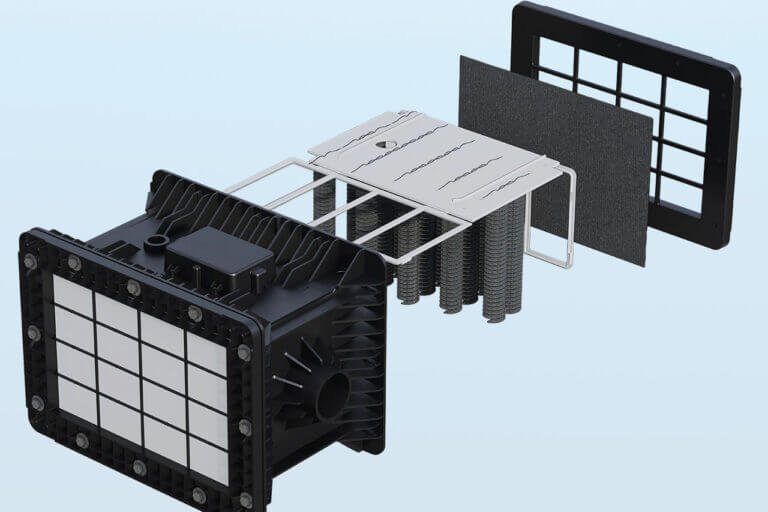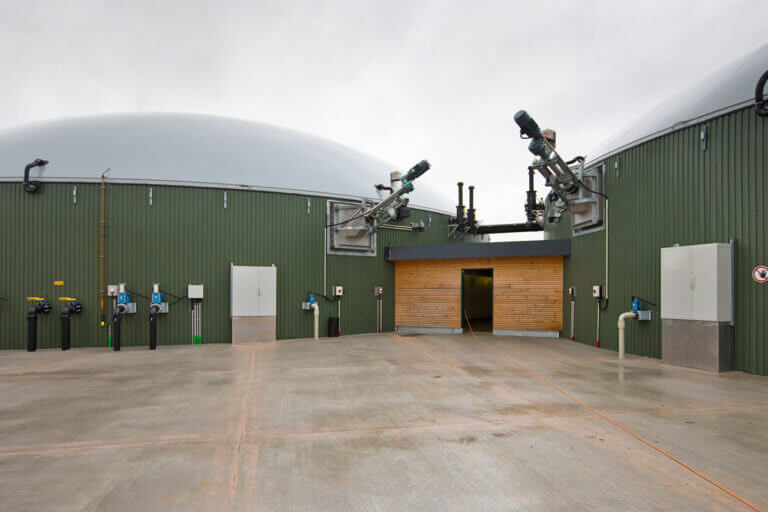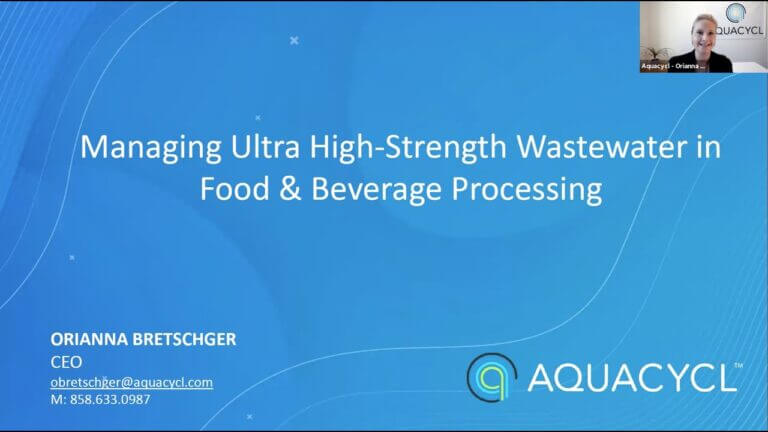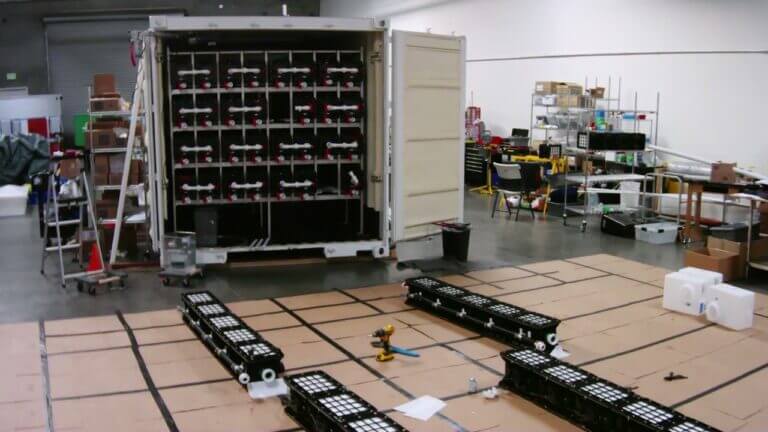Wastewater treatment is a multi-step process that combines physical, biological, and chemical processes to convert wastewater streams into treated water that can be reused or safely released into the environment.
Generally, wastewater treatment steps include primary, secondary, and tertiary treatment of wastewater, each of which addresses a particular area of concern when it comes to ensuring the safety of the final output.
If you’re curious about how primary treatment works, here’s a helpful article.
In this blog, we’ll dive into the secondary wastewater treatment process, including how it works, some common treatment methods, why it’s needed, and touch on the ways Aquacycl technology can play a beneficial role in onsite secondary wastewater treatment.
The importance of secondary wastewater treatment
Secondary wastewater treatment is vital for the safe discharge of wastewater or its reuse in other human activity. Some of the key outcomes of secondary wastewater treatment include the following:
Protecting the Environment
Secondary treatment mainly targets the removal of biodegradable organic pollutants.
This process ensures that receiving water bodies are not subjected to oxygen depletion, a phenomenon that occurs when microorganisms in natural waters break down the organic matter, consuming oxygen that fish and other aquatic life depend on.
Some wastewater also contains high levels of nitrogen and phosphorus, which can cause eutrophication, a condition where excessive nutrient levels stimulate the overgrowth of algae and aquatic plants.
Along with oxygen depletion, eutrophication can further lead to reduced biodiversity and the death of aquatic life and fauna.
Secondary treatment processes aim to reduce organics, or biological oxygen demand (BOD) and nutrient levels, thereby protecting aquatic habitats and the environment.
Economic Benefits
While there are costs associated with implementing and maintaining secondary treatment processes, the long-term economic benefits outweigh these costs.
Clean water bodies enhance property values, support recreational activities, and reduce the costs associated with health issues arising from polluted water.
Additionally, adequately treated wastewater can be recycled and reused, leading to reduced use of freshwater.
Check out this blog to evaluate and lower the costs of industrial wastewater treatment.
Regulatory Compliance
In many countries, regulations mandate specific water quality standards for wastewater discharge into the environment. Secondary treatment is essential to meet these standards since the non-compliance risks are staggering. Companies who find themselves out of compliance could face fines, penalties, legal action, and even a shutdown of production.
How does secondary wastewater treatment work?
Secondary treatment focuses on the removal of dissolved and suspended organic materials in the wastewater stream after it has been screened for larger particles during primary treatment. These solids and dissolved materials include BOD compounds such as sugars, starches, and other organic waste.
Secondary treatment generally relies on microorganisms to break down the organic materials, converting them into various byproducts depending on the specific process used. This biological wastewater treatment typically revolves around aerobic treatment, anaerobic digestion, or a combination of the two.
Aerobic secondary wastewater treatment
Aerobic treatment relies on bacteria that use oxygen to metabolize organic compounds.
The aerobic process is suited for low to medium strength wastewater with BOD levels between 500-5,000 ppm.
However, aerobic secondary treatment is very energy intensive, since air must be continually pumped through the water to ensure aerobic conditions.
The energy requirement leads to large operational costs and corresponding greenhouse gas emissions, which scale proportionally to the BOD levels in the water.
As BOD levels surpass the 5,000 ppm range, anaerobic treatment becomes the more viable option.
Nevertheless, aerobic treatment systems are generally faster at treating water and cheaper to set up than anaerobic processes, so they do provide some advantages depending on the needs of the facility.
Additionally, systems such as aerobic activated sludge treatment can be designed and operated to remove not only organic matter but also nutrients like nitrogen and phosphorus.
Some of the common aerobic treatment methods include the following:
Activated Sludge
Activated sludge treatment uses an aeration tank with agitators that mix oxygen into the wastewater. This tank contains a viable population of microorganisms including bacteria, certain fungi protozoa, and some invertebrates that break down the organic material, resulting in the formation of sludge.
Afterwards, the sludge settles to the bottom in a settling tank and the treated water is discharged for tertiary treatment.
The sludge itself can be used as fertilizer or disposed of in a sanitary landfill.
Membrane Bioreactors
Membrane bioreactors are an aerobic treatment system that combine suspended sludge with membrane filters, rather than settlings tanks, to allow greater removal of solids with lower total space requirements.
They also deliver higher quality effluent suitable for some surface reuse activities and discharge, and can handle nitrogen and phosphorus removal. They are more expensive and energy intensive than traditional aerobic secondary systems, but the tradeoff may be worth it depending on space and effluent quality requirements.
Trickling Filters
Trickling filters utilize bacteria that attach themselves to a medium over which the wastewater flows.
The bacteria form a film on the medium and break down the organic material as it passes over. Trickling filters require less space and energy compared to other aerobic methods and can handle concentrated organics, but have lower volume capacity.
Aerated Lagoons
Aerated lagoons use mechanical surface aerators or submerged aeration systems to treat large volumes of municipal and industrial wastewater. The lagoons are typically 6-20 feet deep and require a fair level of space. They are well suited for low-to-medium strength industrial wastewater.
Anaerobic secondary wastewater treatment
Anaerobic wastewater treatment relies on bacteria that break down organic materials in the absence of oxygen.
Because they do not require aeration, anaerobic treatment systems or digesters have a much lower energy requirement and generate less sludge than aerobic systems.
Additionally, the methane produced as a byproduct, also known as biogas, can be used for energy generation and offset operational costs.
However, if the methane that is produced is flared or not properly collected, it can create further greenhouse gas emissions. A recent study shows that these methane emissions may be much greater than previously reported.
One common challenge with anaerobic systems is that the methanogenic bacteria (those that are breaking down the organics and generating methane) need to operate within consistent, stable conditions.
This means that variations in pH, temperature and pollutant concentrations will disrupt the microbial population, which can take weeks or months to recover from.
As a result, these systems will require equalization tanks, nutrient addition, trained operators, and careful monitoring of the water flowing into the digesters.
The following are a few common anaerobic treatment methods:
Anaerobic Lagoons
Anaerobic lagoons are deep basins that are not aerated, heated or mixed. They’re typically used for pretreatment of raw wastewater and are particularly effective for high strength industrial wastewaters. Anaerobic lagoons are often used in series with aerobic lagoons as each process compliments the other.
Anaerobic lagoons are very effective for dealing with high strength organic waste such as that from animal agriculture. They also produce large amounts of methane, and this can pose collection problems. They require large amounts of space and can have issues with seepage into groundwater.
Upflow Anaerobic Sludge Blanket (UASB)
UASB anaerobic treatment involves pumping wastewater through a bed of sludge containing the anaerobic bacteria. Gas hoods collect methane produced during the anaerobic breakdown which is then pumped away for energy production. These systems work well for food, beverage, and paper industry applications and have a relatively low energy requirement. However, they are not able to achieve surface water discharge quality without additional treatment.
Anaerobic Filters
Anaerobic filters involve flowing wastewater through a support system of pumice, gravel, crushed rock, or similar material that has an anaerobic bacterial film growing on its surface. The slime breaks down organic pollutants and the generated gas is collected. This method is most suited for relatively diluted wastewater that allows substantial collection of biogas.
A new method for secondary treatment
Aquacycl’s BETT technology offers a solution for onsite treatment of high strength wastewater, such as that from the food and beverage industry, that removes some of the pitfalls of the aforementioned treatment methods such as space constraints, energy intensity, and methane emissions.
Combining aerobic and anaerobic treatment
We approach wastewater differently, and can operate as standalone treatment or complement existing aerobic and anaerobic technologies.
By utilizing modular microbial fuel cells that house naturally existing bacteria, highly concentrated wastewater is efficiently treated at lower energy needs and greenhouse gas emissions because our system actually produces electricity without biogas production.
The innovative design combines anaerobic and aerobic environments for fast, efficient treatments with a low physical footprint.
BETT is capable of handling highly concentrated BOD wastewater, such as syrup and sugar wastewater from food and beverage manufacturing.
When used in conjunction with traditional anaerobic treatment, the BETT reactors can help normalize wastewater feedstock, break down more complex carbons into volatile fatty acids (VFA) and consequently increase biogas production of existing anaerobic digesters. They also reduce the need for dilution of high-strength wastewater prior to conventional secondary treatment.
Contact Aquacycl today to find out how our BETT system can improve your facility’s wastewater treatment.


